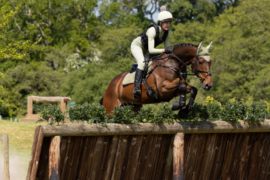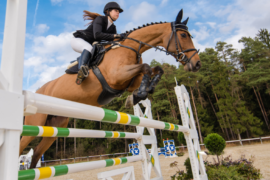Many horse owners clip their horses, whether it’s in the autumn and winter to remove a thick winter coat and keep them cool when working, to neaten up legs, or even for horses with conditions such as Cushing’s that grow incredibly thick coats all year round. Clipping is a useful skill to learn if your horse fits into any of these categories.
Why Clip a Horse?
Horses can be clipped for many reasons….
The most popular reason is to help support a horse’s performance and comfort. Around autumn, horses start to grow thicker, winter coats to help keep them warm on cooler days, but if you horse is still taking part in activities that cause him to sweat, this isn’t ideal. Extra hair in the form of a winter coat can act like an insulating layer- a bit like doing a workout with a padded coat on. This can lead to an increase in sweat (which can create discomfort, hygiene issues and increased washing in the cold weather) and also a decrease in performance as it’s harder for the horse to work.
Some horses have medical conditions that mean they’re happier if they’re clipped. These could include skin conditions that require treatment as close to the skin as possible, or Cushing’s disease, that means the horse has a long, curly coat all year round that doesn’t shed, or something else. In this case, clipping can help with treatment and/or keep the horse happier and more comfortable.
Aesthetics is another reason that people clip- as in, they prefer the look of a horse that is clipped, or who has parts of their body clipped, such as legs.
This is not an exhaustive list of why you should or could clip a horse, but the most common reasons are above.
And don’t assume that your horse will need to be clipped. Many horses cope perfectly well through the winter with their coats left intact, especially if their levels of work are relatively light. Others, particularly if they live outside, will need all their hair to keep them warm enough.
So, when do should you clip your horse?
There are lots of reasons why you might want to clip some or all of your horse, but generally people clip their horses due to seasonal changes or activity level.
Seasonal changes
Autumn is the most common time to clip horses as it’s when the horse’s winter coat starts to come through. When you decide on which clip to do (more to follow), don’t forget to think about the conditions your horse will be exposed to, his living situation, his workload and rugs too. Keep in mind that the horse’s coat will grow back, so you might need to clip again in late winter and even early spring.
Activity level
If your horse is in really hard work, the chances he’ll need to be clipped are much higher than a horse in light work. The horse’s activity level will also contribute to when you do your first clip, and how often you need to reclip too.
Types of clip
Now we know why to clip a horse, and when to clip, the next part of the clipping conundrum to consider is what type of clip:
Full Clip– as the name suggests, this is when the clip removes most of the hair on the horse’s body. Sometimes, people keep the hair on the horse’s legs, and sometimes people leave the horse’s face hair unclipped, other times everything gets clipped.
Hunter Clip– very similar to a full clip, but a numnah shaped area of hair can be left where the saddle goes. This can help to keep the horse more comfortable in ridden work, particularly if a horse is more sensitive.
Trace Clip– this removes hair from the most common areas that the horse sweats: under the neck, chest and around the girth and belly area.
Blanket Clip– the easiest way to imagine this is to think of the area an exercise sheet would cover on the horse. This can help to keep the horse’s hindquarters warmer, but leaves the neck, belly, chest and girth clipped.
Now you know the kind of clip that is going to suit your horse, you need to assemble your equipment. You’ll need:
• Clippers, with extra blades – make sure your clippers are in good working order, are clean, and have sharp blades before you tie your horse up to clip.
• Extension cord with circuit breaker – as you move around the horse, you’ll need extra cord (if your clippers are mains rather than battery operated) to get to everywhere you need. Also make sure you have a circuit breaker for safety,
• Grooming kit – this will be useful before clipping, during, and after.
• Oil for clippers – to help keep the blades lubricated as you go.
• A well lit stable – a stable generally provides a better environment for clipping as you have more control of the light, temperature, and other things that could spook or worry the horse.
• Rug – as you remove the horse’s hair, particularly if you’re doing a full clip, you’ll need to put a rug on him to prevent him getting cold.
• Coveralls/overalls/clipping clothes – when you’re clipping your horse, hair goes everywhere, so putting on coveralls/overalls or clipping clothes can really help!
• Riding hat, boots and safety wear– some horses really don’t like to be clipped, and others can react when clippers get hot or if they get tickled when you’re clipping. Wear the appropriate safety kit to help keep you safe and protected.
The clipping process falls into three categories: preparation, the clip, post-clip care.
Preparation
Making sure you, your horse and your clippers are prepared will make the whole experience a lot easier for all concerned.
- If your horse is new to clipping, do work before the day to desensitise him to the sound and feeling.
- Make sure your horse is clean and dry. If your horse has a greasy coat, you might need to wash your horse a day or two before to help preserve your blades and make clipping easier.
- Ensure every part of the horse you want to clip is mud free- your clippers and horse will thank you!
- Check your clippers are working correctly and that the blades are sharp.
- Make sure you’ve allocated enough time to do the job properly and safely. Clipping really shouldn’t be rushed.
- Double check that the stable environment is safe, that you have your safety equipment, and that children and pets are kept away. Ensure you have everything you need, including a rug, in easy reach before you begin.
- Before you start clipping, plan where you’re going to clip. Unless you’re doing a full clip, mark out the areas you’re going to leave with chalk to prevent any accidents.
- Make sure you always clip against the direction of the hair for a close cut. Be aware that in some areas, like the flank, the hair will change direction, so you will need to too!
- Use long, smooth strokes to achieve a good finish.
- Check to make sure the blades aren’t overheating as you go as this can make the best tempered horse become twitchy and uncomfortable.
- Keep the skin taut as you clip – you might need to use your free hand to smooth any skin out as you go to get the best finish.
- Stop to clear away hair and oil your blades at regular intervals to keep them running smoothly.
Post clip care
- As you go, make sure you brush away loose hair. This gives you a much better idea of how your clip is going.
- Consider bathing you horse or even using a hot cloth after clipping to remove any residual oil.
- Make sure you have appropriate rugs. As you’ve removed some/all of your horse’s natural protection against the elements, you’ll need to make sure you compensate with appropriate rugs for turnout and stable, and maybe exercise too.
Clipping is something that many people do and it can be used to help promote well being and comfort, as well as help to tidy them up! If you’re struggling with clipping or feel overwhelmed with the process, you can always pay people to clip your horse for you, and maybe even teach you how to clip too, to make the process easier next time.












